Few bands have left as indelible a mark on the landscape of modern music as Pink Floyd. From their early psychedelic experiments in the London underground to their monumental stadium shows and genre-defining concept albums, Pink Floyd’s sound transcended rock and ventured into the realms of art, philosophy, and cultural commentary. Their music, filled with intricate soundscapes, philosophical lyrics, and groundbreaking production, remains a cornerstone of not just progressive rock but of popular music as a whole. The band’s ability to combine technical mastery with deep emotional resonance has earned them a place among the most influential and revered artists in history.
We take a deep dive into Pink Floyd’s extensive discography, covering not only their studio albums but also the B-sides, rarities, and side projects that further defined their legacy. From their early days with Syd Barrett’s visionary influence to the sprawling, conceptual works led by Roger Waters, and finally to David Gilmour’s era of atmospheric rock, this overview will chart the band’s artistic evolution. Additionally, we’ll explore the lesser-known gems in their catalog—film soundtracks, live performances, and solo projects—that reflect the full breadth of Pink Floyd’s creative output.
Studio Albums
The Piper at the Gates of Dawn (1967)
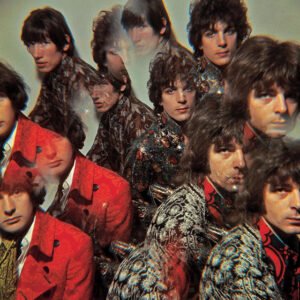
Pink Floyd’s debut album, heavily shaped by founding member Syd Barrett, is a quintessential piece of the 1960s British psychedelic movement. The Piper at the Gates of Dawn captures the whimsical, surreal, and experimental essence of Barrett’s songwriting, blending dreamlike imagery with spacey sound effects. Tracks like “Astronomy Domine” and “Interstellar Overdrive” established the band’s reputation for extended instrumental improvisations, while shorter, quirky songs like “The Gnome” and “Bike” showcased Barrett’s eccentric lyrical style. The album remains a defining artifact of psychedelic rock, though Barrett’s mental health struggles soon forced him to leave the band.
A Saucerful of Secrets (1968)
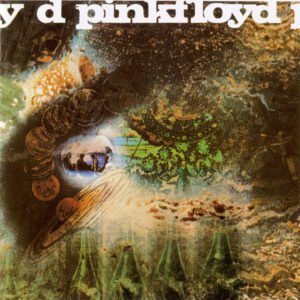
With Syd Barrett’s deteriorating condition, A Saucerful of Secrets marked the transitional period for Pink Floyd, as David Gilmour was brought in to replace Barrett. The album is more experimental and spacey, pushing the boundaries of early progressive rock. Roger Waters began to take more control of the songwriting, as evidenced in tracks like “Set the Controls for the Heart of the Sun.” The title track is a sprawling, abstract piece that foreshadowed the band’s future explorations of soundscapes and complex arrangements. While less coherent than later works, it cemented Pink Floyd’s future direction as more than just a psychedelic pop band.
More (1969)
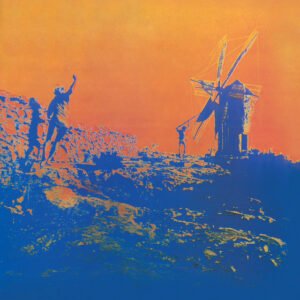
More is Pink Floyd’s first full-length film soundtrack, created for Barbet Schroeder’s film of the same name. The album blends folk ballads, acoustic guitar, and more experimental, atmospheric sounds. Tracks like “Green Is the Colour” and “Cirrus Minor” show the band’s softer, pastoral side, while “The Nile Song” offers a rare moment of hard rock energy. This album is often seen as a bridge between their early psychedelic work and the more structured, conceptual soundscapes of their later albums.
Ummagumma (1969)
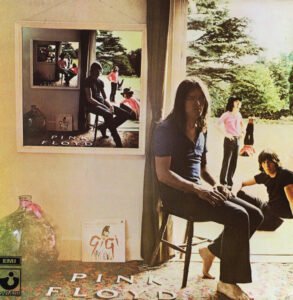
Ummagumma is a double album, split between live recordings and studio experiments, making it one of Pink Floyd’s most avant-garde releases. The live disc features extended versions of early Floyd tracks like “Careful with That Axe, Eugene” and “A Saucerful of Secrets,” showing the band’s growing prowess as live performers. The studio disc, however, features individual contributions from each band member, ranging from abstract sound collages to classical-influenced pieces, including Waters’ unsettling “Several Species of Small Furry Animals…” and Wright’s haunting “Sysyphus.” The album is divisive among fans but reflects the band’s willingness to experiment.
Atom Heart Mother (1970)

Atom Heart Mother saw Pink Floyd expand their sound into orchestral arrangements and grand-scale compositions. The title track, a 23-minute suite featuring brass, choir, and complex instrumental passages, marked the band’s growing ambition. The album also includes more traditional tracks like “If” and “Fat Old Sun,” which show a more subdued, introspective side of the band. Atom Heart Mother was a step toward the conceptual and cinematic qualities that would define their later work, even if the band later expressed mixed feelings about it.
Meddle (1971)

Meddle is widely regarded as the album where Pink Floyd truly found their voice. The sprawling, 23-minute epic “Echoes” takes up the second half of the album, featuring intricate interplay between the band members, atmospheric soundscapes, and one of their most enduringly popular pieces. The album blends the pastoral acoustic sound of earlier albums with the grand, spacey production that would come to define their work. Tracks like “One of These Days” show their growing mastery of mood and dynamic shifts, hinting at the conceptual cohesion that would come with The Dark Side of the Moon.
Obscured by Clouds (1972)

Another film soundtrack, Obscured by Clouds was created for the French film La Vallée. While not as thematically ambitious as their major concept albums, the record offers a mix of solid, straightforward rock songs like “Free Four” and atmospheric instrumentals such as the title track. It’s a relatively understated album in the Floyd catalog, but it served as a precursor to the polished brilliance of The Dark Side of the Moon.
The Dark Side of the Moon (1973)
One of the most iconic and successful albums of all time, The Dark Side of the Moon marked a new era for Pink Floyd, defined by its tight, cohesive structure and explorations of universal themes like time, mental illness, money, and death. With songs like “Time,” “Money,” and “Brain Damage,” the album is a masterclass in progressive rock, blending Waters’ deeply philosophical lyrics with Gilmour’s stunning guitar work and Wright’s expansive keyboards. Alan Parsons’ production played a key role in shaping the album’s sound, which includes innovative use of tape loops and synthesizers. The Dark Side of the Moon solidified Pink Floyd’s place as one of the biggest and most influential bands in the world.
Wish You Were Here (1975)
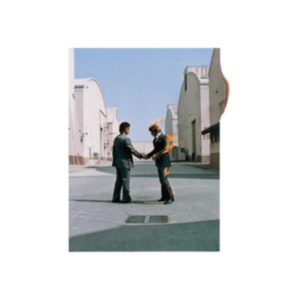
A meditation on absence and the pressures of fame, Wish You Were Here pays tribute to Syd Barrett while also critiquing the music industry. The album’s centerpiece, the nine-part suite “Shine On You Crazy Diamond,” serves as a haunting and emotional homage to Barrett, while songs like “Welcome to the Machine” and “Have a Cigar” reflect the band’s disillusionment with the corporate side of the industry. The title track, “Wish You Were Here,” remains one of their most beloved songs, a poignant reflection on loss and connection. This album solidified their status as both critical darlings and commercial giants.
Animals (1977)

Inspired by George Orwell’s Animal Farm, Animals is a politically charged concept album that tackles themes of class division, greed, and societal decay. With only five tracks, including the sprawling “Dogs” and the biting “Pigs (Three Different Ones),” the album marked a darker, more aggressive shift in the band’s sound. Roger Waters’ increasingly dominant role as a lyricist and conceptual leader is evident here, as is the band’s growing cynicism about the world around them. Animals is considered one of their most intellectually challenging albums.
The Wall (1979)

Pink Floyd’s ambitious rock opera, The Wall, is a double album that explores themes of isolation, alienation, and the psychological toll of fame. The story follows the character of Pink, who builds a metaphorical wall around himself to protect against emotional trauma, only to become trapped in his own isolation. Songs like “Another Brick in the Wall, Part 2,” “Comfortably Numb,” and “Run Like Hell” became massive hits, but the album as a whole is a deeply conceptual and theatrical work. Waters’ vision dominates the album, and it became the basis for a grand live show and a feature film, marking the peak of Pink Floyd’s commercial success.
The Final Cut (1983)
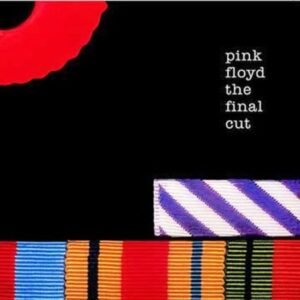
Essentially a Roger Waters solo album in all but name, The Final Cut is a somber, introspective work that serves as both a sequel to The Wall and a critique of war, particularly Britain’s involvement in the Falklands War. Waters’ deeply personal lyrics and sparse arrangements dominate the album, and it lacks the collaborative input that made earlier works so dynamic. This would be Waters’ final album with Pink Floyd, and while it didn’t reach the same commercial heights as its predecessors, it remains a polarizing but important entry in the band’s catalog.
A Momentary Lapse of Reason (1987)

After Roger Waters’ departure, David Gilmour led Pink Floyd into a new era with A Momentary Lapse of Reason. The album returned to a more polished, atmospheric rock sound, exemplified by tracks like “Learning to Fly” and “On the Turning Away.” While the album received mixed critical reviews for its perceived lack of cohesion, it was a commercial success and signaled that Pink Floyd could survive without Waters. Gilmour’s guitar work and production are the focal points, although the absence of Waters’ conceptual depth is often noted.
The Division Bell (1994)

The Division Bell saw Pink Floyd return to more introspective themes, with a focus on communication and relationships. The album is more collaborative than A Momentary Lapse of Reason, with Rick Wright contributing more to the songwriting and performing. Tracks like “High Hopes” and “What Do You Want from Me” blend the atmospheric, melancholic tones of their earlier work with more mature reflections on human connection. The album was well-received and marked a satisfying late-period release for the band, though it would be their last with new material for 20 years.
The Endless River (2014)

Released as a tribute to the late Richard Wright, The Endless River is largely instrumental and made up of sessions recorded during The Division Bell era. The album serves as a reflective, atmospheric journey through the band’s musical history, with a focus on ambient soundscapes and spacey textures. While it lacks the narrative drive of their earlier works, The Endless River offers a fitting, contemplative farewell to Pink Floyd’s storied career, especially as a tribute to Wright’s crucial contributions to their sound.
B-sides and Rarities
Rare Tracks and B-sides
Though Pink Floyd is primarily known for their studio albums, their discography extends far beyond the confines of those iconic LPs. Unlike many bands, Pink Floyd rarely released traditional B-sides with their singles, but they did produce a wealth of material that remained off the radar of mainstream listeners. These rare tracks and B-sides offer a glimpse into the experimental ethos of the band, and some evolved into live favorites or cult classics over time. Much of this material was later unearthed in comprehensive box sets, giving fans a chance to explore lesser-known aspects of the band’s creative process.
Early Singles
“Arnold Layne” / “See Emily Play”:
Pink Floyd’s early singles, released in 1967, were crucial in defining their place in the burgeoning psychedelic rock scene. “Arnold Layne,” a quirky, surreal tale about a cross-dressing character who steals women’s clothes, was one of Syd Barrett’s signature compositions. Although not accompanied by a traditional B-side, it quickly gained cult status. “See Emily Play,” with its kaleidoscopic sound and whimsical lyrics, followed as another non-album single that firmly placed Pink Floyd at the forefront of British psychedelia. These early songs, marked by Barrett’s vivid imagination, remain touchstones of 1960s counterculture.
“Point Me at the Sky” / “Careful with That Axe, Eugene” (1968):
As the band moved into more experimental territory following Barrett’s departure, they released the single “Point Me at the Sky,” a dystopian, sci-fi narrative with little commercial success at the time. Its B-side, “Careful with That Axe, Eugene,” however, became one of their most enduring tracks. An instrumental piece, it featured haunting whispers and a climactic scream, embodying the band’s shift toward more atmospheric, unsettling music. While the A-side remains obscure, “Careful with That Axe, Eugene” became a staple in their live performances, demonstrating the band’s evolving sound.
Hidden Gems
“Embryo”:
“Embryo” is perhaps the most famous of Pink Floyd’s unreleased studio tracks, recorded in 1968 but never making it onto an official album. It was initially released on a compilation album titled Picnic – A Breath of Fresh Air in 1970. Though it remained an outtake, “Embryo” became a favorite during live performances, evolving into an extended piece that blended eerie atmospheres with delicate acoustic sections. The song’s minimal studio version only hints at its potential, but the live versions showcased how Floyd could take a simple idea and transform it into something expansive and hypnotic.
Live and Demo Tracks
Demos and Live Versions:
Pink Floyd’s penchant for experimentation often extended into their live performances, where songs would morph into entirely different beasts compared to their studio counterparts. Notable live versions, especially those found on The Early Years and The Later Years box sets, give a deeper insight into the band’s creative process. Demos like “Vegetable Man” and “Scream Thy Last Scream,” both written by Syd Barrett, remained unreleased for years, only appearing decades later in these archival collections. Other highlights include extended live renditions of songs like “Echoes” and “Careful with That Axe, Eugene,” where the band’s improvisational abilities shined through, creating a unique experience every time they performed them.
Compilation Albums

While much of Pink Floyd’s lesser-known material never found its way onto traditional studio albums, several compilation releases have served as vital entry points for fans seeking to dive deeper into the band’s catalog. These compilations often featured rare tracks, alternate versions, or edits that weren’t available elsewhere.
Relics (1971):
One of the most important compilations in the Pink Floyd canon, Relics gathers early singles, B-sides, and deep cuts from the band’s formative years. In addition to well-known tracks like “Arnold Layne” and “See Emily Play,” Relics includes the rare gem “Biding My Time,” a bluesy track from the band’s early days that never appeared on a studio album. With a focus on their Syd Barrett-era material and early explorations, Relics offers a window into Pink Floyd’s transition from a quirky psychedelic band to an experimental powerhouse.
Works (1983):
Works is another compilation that includes a mixture of hits and rarities. Of particular note is the inclusion of “Embryo,” the rare studio track that had previously been released only on a limited-edition compilation in 1970. The album also features some slightly different mixes of well-known songs, making it a valuable collection for completists looking to hear slight variations on familiar material.
A Collection of Great Dance Songs (1981) & Echoes: The Best of Pink Floyd (2001):
These compilations primarily focus on the band’s hits, but they also include unique edits and versions of tracks that differ from the original album releases. For example, A Collection of Great Dance Songs features an alternate recording of “Money,” with David Gilmour rerecording much of the track due to licensing issues with the original. Meanwhile, Echoes serves as a more comprehensive retrospective, featuring tracks from across the band’s career, including seamless transitions between songs that create a continuous listening experience. Though primarily aimed at casual listeners, these compilations offer something unique for die-hard fans as well.
Other Projects and Collaborations
Film Soundtracks
Pink Floyd’s ventures into film soundtracks allowed them to extend their experimental ethos beyond traditional rock albums. The atmospheric and avant-garde nature of their music made them a natural fit for filmmakers seeking a unique sonic backdrop. Their contributions to film soundtracks not only demonstrated their versatility but also allowed the band to explore ambient soundscapes, folk influences, and early glimpses of what would become their hallmark sound.
More (1969):
More marked Pink Floyd’s first full-length soundtrack, composed for Barbet Schroeder’s film about drug use and counterculture. The album is a mix of pastoral folk ballads, like “Green Is the Colour” and “Cymbaline,” and more aggressive rock tracks, such as “The Nile Song.” While not as conceptually cohesive as their later albums, More allowed the band to explore acoustic and cinematic textures that would inform future projects. Its meditative and experimental approach to sound would be echoed in their later film work, particularly in its atmospheric, instrumental passages.
Obscured by Clouds (1972):
Obscured by Clouds, another soundtrack for a Barbet Schroeder film (La Vallée), arrived just before The Dark Side of the Moon and is often seen as an overlooked gem in Pink Floyd’s catalog. The music, while simpler and less ambitious than the band’s core albums, offers a compelling mixture of blues-inflected rock (“Childhood’s End”) and atmospheric instrumentals (“Mudmen”). Despite being a soundtrack, the album contains moments that foreshadow the thematic and sonic depth Pink Floyd would soon embrace in their mainstream releases.
Contributions to Zabriskie Point (1970):
Pink Floyd also contributed to Michelangelo Antonioni’s countercultural film Zabriskie Point. Though not a full soundtrack, their music plays a significant role in the film, with alternate takes and experimental cuts tailored for specific scenes. Songs like “Heart Beat, Pig Meat” and “Crumbling Land” are notable for their abstract nature and contrast with their more traditional albums. While Zabriskie Point wasn’t a major commercial success, it remains an interesting artifact of Pink Floyd’s work in film, capturing their early experimental spirit.
Live Albums and Performances
https://youtu.be/y-E7_VHLvkE?si=YIcn5cNrJkxO-cky
Pink Floyd’s live performances became legendary for their groundbreaking fusion of music and visuals. While their studio albums were celebrated for their conceptual brilliance, the band’s live shows took that experience to an entirely different level, utilizing cutting-edge lighting, video projections, and theatrical effects. The band captured some of these performances in iconic live albums and films, offering fans a glimpse into their mesmerizing concert experience.
Live at Pompeii (1972):
One of the most unique live performances in rock history, Live at Pompeii features Pink Floyd performing without an audience in the ruins of the ancient Roman city of Pompeii. Filmed by director Adrian Maben, the performance includes extended versions of tracks like “Echoes” and “A Saucerful of Secrets,” with the volcanic landscape and haunting ruins creating a surreal backdrop for the band’s spacey, instrumental-heavy sound. Live at Pompeii has since become a cult classic, embodying Pink Floyd’s commitment to pushing the boundaries of live music as an art form.
Pulse (1995):
Pulse captures Pink Floyd’s Division Bell tour and includes a full live performance of The Dark Side of the Moon. The album is noted not only for its pristine live sound quality but also for the intricate laser and light shows that accompanied the performances. Standout tracks like “Comfortably Numb” and “High Hopes” demonstrate the band’s ability to recreate their studio precision in a live setting. The album and corresponding DVD have become essential artifacts for fans, particularly due to its complete live rendition of The Dark Side of the Moon, which was rare for their concerts.
Delicate Sound of Thunder (1988):
Recorded during the A Momentary Lapse of Reason tour, Delicate Sound of Thunder is one of the most celebrated live albums of the 1980s. The album showcases the band’s return to form following Roger Waters’ departure, with David Gilmour leading the charge. Featuring stunning versions of classics like “Wish You Were Here” and “Shine On You Crazy Diamond,” Delicate Sound of Thunder captures the energy and atmosphere of Pink Floyd’s later-era performances. The album’s combination of new material and older classics gave fans a complete picture of Pink Floyd’s live evolution.
Solo Work and Collaborations
The individual members of Pink Floyd pursued various solo projects during and after their time with the band, offering insight into their personal musical directions. These solo ventures often reflected the band members’ divergent styles, from Roger Waters’ politically charged concepts to David Gilmour’s melodic guitar-driven work. Collectively, these projects give fans a more complete understanding of the individual contributions each member brought to Pink Floyd.
Roger Waters’ Solo Career:
After leaving Pink Floyd, Roger Waters launched a solo career that focused on the same political and philosophical themes he had explored with the band. His first solo album, The Pros and Cons of Hitch Hiking (1984), is a conceptual piece that delves into the fragmented dreams of a man on a road trip, displaying Waters’ love for narrative-driven music. Amused to Death (1992) is widely considered his best solo work, a scathing critique of war, media, and society, continuing his legacy as a songwriter with a sharp, critical voice. Waters’ solo career has remained consistent with his focus on grand, ambitious concepts, often extending the themes of isolation, power, and war that he introduced in albums like The Wall and Animals.
David Gilmour’s Solo Career:
David Gilmour’s solo work has always centered around his expressive guitar work and more personal, introspective songwriting. His self-titled debut album David Gilmour (1978) offered a glimpse of his songwriting outside of the band, with tracks like “There’s No Way Out of Here” showcasing his melodic, blues-inflected guitar playing. Gilmour’s later albums, such as On an Island (2006) and Rattle That Lock (2015), further explored his mellow, atmospheric sound, often blending reflective lyrics with expansive musical arrangements. Gilmour’s solo albums maintain the lyrical introspection and soaring guitar work that define his contributions to Pink Floyd, though with a more personal, down-to-earth tone.
Richard Wright & Nick Mason:
Richard Wright’s contributions to Pink Floyd were always vital to the band’s textured soundscapes, and his solo work allowed him to further explore his love for jazz, ambient music, and moody compositions. His debut album Wet Dream (1978) reflects his delicate, understated approach to songwriting, blending lush keyboard arrangements with subtle, emotive lyrics. Meanwhile, drummer Nick Mason’s most notable post-Floyd project is Nick Mason’s Saucerful of Secrets, a live band that revisits Pink Floyd’s early, psychedelic material, offering a fresh take on songs from The Piper at the Gates of Dawn and A Saucerful of Secrets. This project allows Mason to celebrate the band’s origins while bringing new energy to their classic psychedelic sound.
Influence on Music and Culture
Pink Floyd’s impact on the music world is profound, extending far beyond the boundaries of rock. Their unique blend of experimental soundscapes, philosophical lyricism, and technological innovation not only defined progressive rock but also transcended it, leaving an indelible mark on countless artists and genres. The band’s ability to weave complex themes like alienation, war, and the human condition into sprawling musical epics has made them a touchstone for generations of musicians and thinkers. Their albums aren’t just records; they’re immersive experiences that challenge listeners to reflect on the world around them.
Impact on Progressive Rock
Pink Floyd is often credited with elevating rock music into the realm of high art, and their role in shaping the progressive rock movement is pivotal. Their albums, particularly The Dark Side of the Moon, Wish You Were Here, and Animals, set the template for what progressive rock could achieve: conceptual depth, musical complexity, and a willingness to push the boundaries of genre conventions. Their expansive approach to music, which incorporated elements of psychedelia, classical music, jazz, and electronic sound manipulation, inspired a wave of bands eager to explore uncharted territory.
Bands like Radiohead, who cite Pink Floyd as a major influence, carried on the legacy of experimentation, using Floyd’s blueprint of blending the personal with the political and the cerebral with the emotional. Porcupine Tree, another progressive rock band, has long acknowledged their debt to Pink Floyd’s atmospheric sound and conceptual scope. Meanwhile, Tool, known for their dark, introspective lyrics and lengthy, complex compositions, echoes the thematic and structural ambition of Pink Floyd’s work. In these and many other bands, Pink Floyd’s influence is unmistakable, and their role in shaping the progressive rock genre cannot be overstated.
Enduring Popularity
Even decades after their heyday, Pink Floyd’s music continues to captivate new generations. The band’s enduring popularity is sustained by reissues, remastered editions, and comprehensive box sets, such as The Early Years and The Later Years, which offer fans deeper insights into their creative process and uncover previously unreleased material. These releases not only keep the band’s music fresh but also ensure that Pink Floyd remains relevant in the ever-changing landscape of modern music.
Live tributes, such as Roger Waters’ tours where he performs The Wall in its entirety, or David Gilmour’s solo shows, continue to draw massive crowds, demonstrating the lasting appeal of their music. Tribute bands like Brit Floyd and The Australian Pink Floyd Show also keep the band’s legacy alive, offering audiences the chance to experience the grandeur of their live performances. The band’s cultural resonance is further cemented through documentaries, books, and exhibitions, such as the Their Mortal Remains exhibit, which showcases their history and innovation.
As a cultural force, Pink Floyd’s influence permeates not only music but also film, art, and technology. Their pioneering use of visual effects and conceptual art in live shows paved the way for modern multimedia concerts, while their exploration of complex social and psychological themes continues to resonate in an era increasingly defined by societal fragmentation.
Closing Thoughts
Pink Floyd’s contribution to music is nothing short of monumental. Over the course of their career, they transformed from a psychedelic rock band into one of the most influential and revered artists in music history. Their studio albums, such as The Dark Side of the Moon and The Wall, became cultural landmarks, pushing the boundaries of rock music both sonically and thematically. Yet, their legacy extends beyond these monumental works. Their vast catalog of B-sides, soundtracks, and live performances reveals a band constantly evolving, experimenting, and pushing themselves to create something larger than life.
Beyond their music, Pink Floyd helped redefine what it meant to be a rock band, turning their live shows into immersive, multimedia experiences that shaped the future of concert production. Their influence can be felt in a wide range of genres, from progressive rock and ambient music to modern alternative rock and electronica. Each member of the band, from Roger Waters’ introspective lyricism to David Gilmour’s soaring guitar solos and Richard Wright’s lush keyboards, contributed to a body of work that remains timeless.
Pink Floyd’s legacy is not just one of musical innovation but also one of profound artistic and cultural impact. Their music continues to inspire, provoke, and connect with audiences, ensuring that their place in music history remains secure for generations to come.
